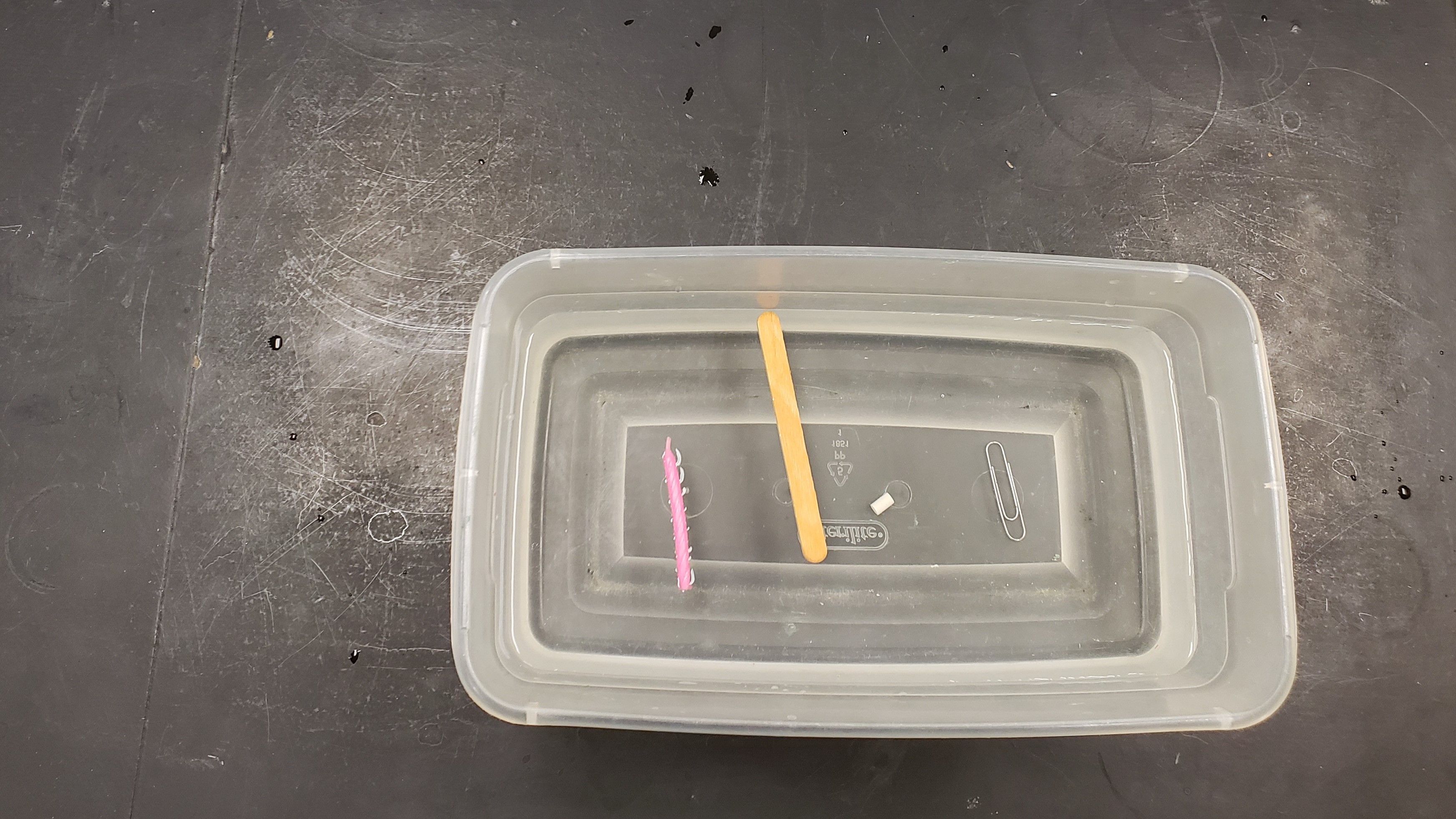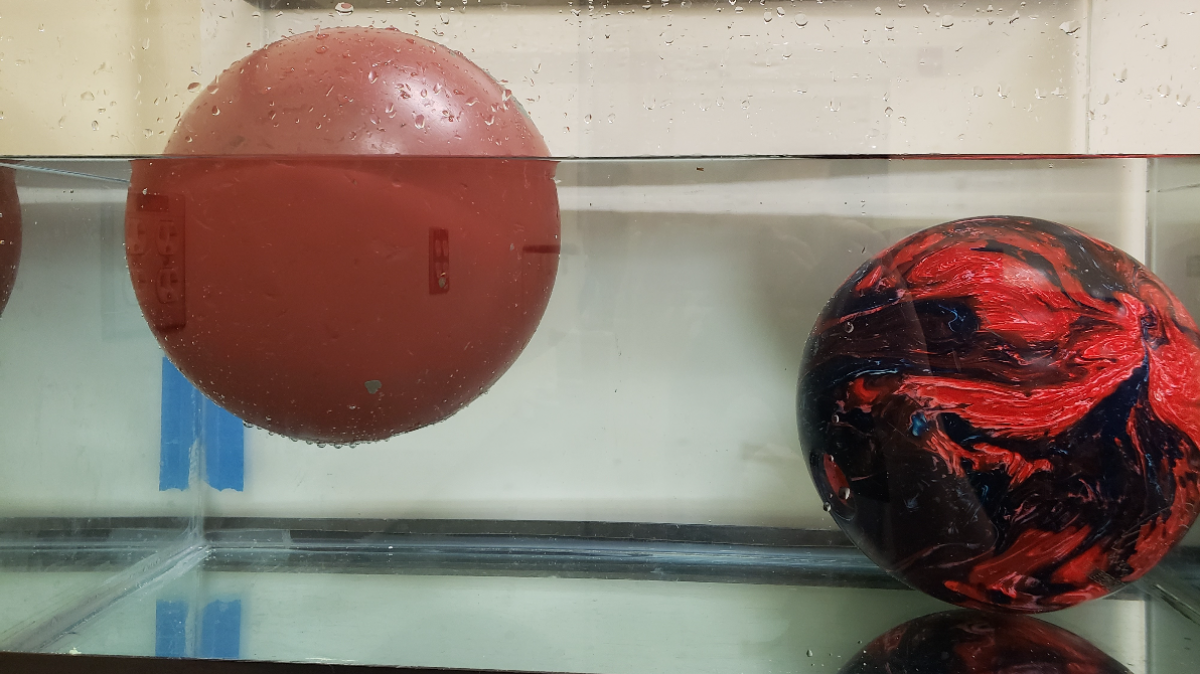Overview
This investigation opens with students considering items that sink and float and why that might be. Students make predictions, observations, and explanations as they place everyday objects in water. The students record their observations in a table, either writing or drawing as appropriate, and consider similarities and differences between what sinks and floats. Finally, students are challenged to build a boat out of play-doh to hold as many marbles as possible! The implications of shape for sinking and floating are then discussed. This investigation is derived from the American Chemical Society’s Float and Sink Lesson.
- Grades K-3
- In person and virtual visit options available.
- For in person visits, access to a water supply is required.
- For virtual visits, teachers and/or students will need to supply their own materials and the boat building challenge is replaced by considering some objects with different shapes made from the same material.
This investigation opens with students considering items that sink and float and why that might be. Students make predictions, observations, and explanations as they place everyday objects in water. The students record their observations in a table, either writing or drawing as appropriate, and consider similarities and differences between what sinks and floats. Finally, students are challenged to build a boat out of play-doh to hold as many marbles as possible! The implications of shape for sinking and floating are then discussed. This investigation is derived from the American Chemical Society’s Float and Sink Lesson.
- Grades K-3
- In person and virtual visit options available.
- For in person visits, access to a water supply is required.
- For virtual visits, teachers and/or students will need to supply their own materials and the boat building challenge is replaced by considering some objects with different shapes made from the same material.
Materials
- Small container (shoe box size)
- Water
- 6-8 everyday items that can be submerged in water. Ideally, at least two from each group below:
- wooden items, e.g. pencil, popsicle stick
- metal items, e.g. penny, paperclip
- wax items, e.g. birthday candle, tea-light
- rubber items, e.g. elastic band, eraser
- Play-doh
- Marbles
- Small container (shoe box size)
- Water
- 6-8 everyday items that can be submerged in water. Ideally, at least two from each group below:
- wooden items, e.g. pencil, popsicle stick
- metal items, e.g. penny, paperclip
- wax items, e.g. birthday candle, tea-light
- rubber items, e.g. elastic band, eraser
- Play-doh
- Marbles
Follow Up and Resources
This can be an effective launch point to dig deeper into density. Check out the following:
-
Our investigation, Sea for Yourself, on fluid density and ocean currents.
-
Our oil spill investigation, You’re Oil I Need.
-
Our investigation on relative density, Whatever Floats Your Boat.
-
PBS Simbucket Density Lab simulation.
- The American Chemical Society’s Float and Sink Lesson.
This can be an effective launch point to dig deeper into density. Check out the following:
-
Our investigation, Sea for Yourself, on fluid density and ocean currents.
-
Our oil spill investigation, You’re Oil I Need.
-
Our investigation on relative density, Whatever Floats Your Boat.
-
PBS Simbucket Density Lab simulation.
- The American Chemical Society’s Float and Sink Lesson.
Standards
Properties of Matter
- SC.K.P.8.1: Sort objects by observable properties, such as size, shape, color, temperature (hot or cold), weight (heavy or light) and texture.
- SC.1.P.8.1: Sort objects by observable properties, such as size, shape, color, temperature (hot or cold), weight (heavy or light), texture, and whether objects sink or float.
- SC.2.P.8.1: Observe and measure objects in terms of their properties, including size, shape, color, temperature, weight, texture, sinking or floating in water, and attraction and repulsion of magnets.
- SC.3.P.8.2: Measure and compare the mass and volume of solids and liquids.
The Practice of Science
- SC.K.N.1.2: Make observations of the natural world and know that they are descriptors collected using the five senses.
- SC.K.N.1.3: Keep records as appropriate - such as pictorial records - of investigations conducted.
- SC.1.N.1.2: Using the five senses as tools, make careful observations, describe objects in terms of number, shape, texture, size, weight, color, and motion, and compare their observations with others.
- SC.1.N.1.3: Keep records as appropriate - such as pictorial and written records - of investigations conducted.
- SC.3.N.1.3: Keep records as appropriate, such as pictorial, written, or simple charts and graphs, of investigations conducted.
Properties of Matter
- SC.K.P.8.1: Sort objects by observable properties, such as size, shape, color, temperature (hot or cold), weight (heavy or light) and texture.
- SC.1.P.8.1: Sort objects by observable properties, such as size, shape, color, temperature (hot or cold), weight (heavy or light), texture, and whether objects sink or float.
- SC.2.P.8.1: Observe and measure objects in terms of their properties, including size, shape, color, temperature, weight, texture, sinking or floating in water, and attraction and repulsion of magnets.
- SC.3.P.8.2: Measure and compare the mass and volume of solids and liquids.
The Practice of Science
- SC.K.N.1.2: Make observations of the natural world and know that they are descriptors collected using the five senses.
- SC.K.N.1.3: Keep records as appropriate - such as pictorial records - of investigations conducted.
- SC.1.N.1.2: Using the five senses as tools, make careful observations, describe objects in terms of number, shape, texture, size, weight, color, and motion, and compare their observations with others.
- SC.1.N.1.3: Keep records as appropriate - such as pictorial and written records - of investigations conducted.
- SC.3.N.1.3: Keep records as appropriate, such as pictorial, written, or simple charts and graphs, of investigations conducted.




